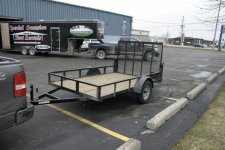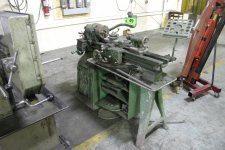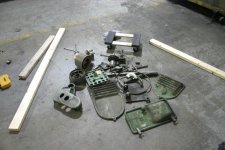Caesars0331
Aluminum
- Joined
- May 21, 2012
- Location
- Detroit, Michigan
I've been a member for a few years, but very inactive, so I guess this post will serve as an introduction as well...
I've wanted to purchase and rehab a SB lathe, and subsequently learn how to use it, for around 6 years. Timing never worked out, as I was moving around the east coast every 1-2 years during that time and my wood shop and tools were in storage. Now that I'm settled in a location for the foreseeable future, I started watching the CL ads and various auctions.
I found an auction in Ontario, just across the bridge from my location in Detroit, that had listed a 10" South Bend. I could see it was in fairly rough shape, but it had a few of the features I wanted and seeing how the auction was in Canadian dollars, I put an autobid in, trying to justify to myself that if I won, it would actually be cheaper than the price tag looked . I won the lot for less than my autobid, which came out to ~$380 USD.
So I hitched up my small trailer, loaded my engine puller and a few straps, and crossed the Ambassador Bridge.

15 minutes after crossing the bridge, this is what I arrived to.



So I first removed the easy parts and piled these things up to put in bins.

I've wanted to purchase and rehab a SB lathe, and subsequently learn how to use it, for around 6 years. Timing never worked out, as I was moving around the east coast every 1-2 years during that time and my wood shop and tools were in storage. Now that I'm settled in a location for the foreseeable future, I started watching the CL ads and various auctions.
I found an auction in Ontario, just across the bridge from my location in Detroit, that had listed a 10" South Bend. I could see it was in fairly rough shape, but it had a few of the features I wanted and seeing how the auction was in Canadian dollars, I put an autobid in, trying to justify to myself that if I won, it would actually be cheaper than the price tag looked . I won the lot for less than my autobid, which came out to ~$380 USD.
So I hitched up my small trailer, loaded my engine puller and a few straps, and crossed the Ambassador Bridge.

15 minutes after crossing the bridge, this is what I arrived to.



So I first removed the easy parts and piled these things up to put in bins.
















